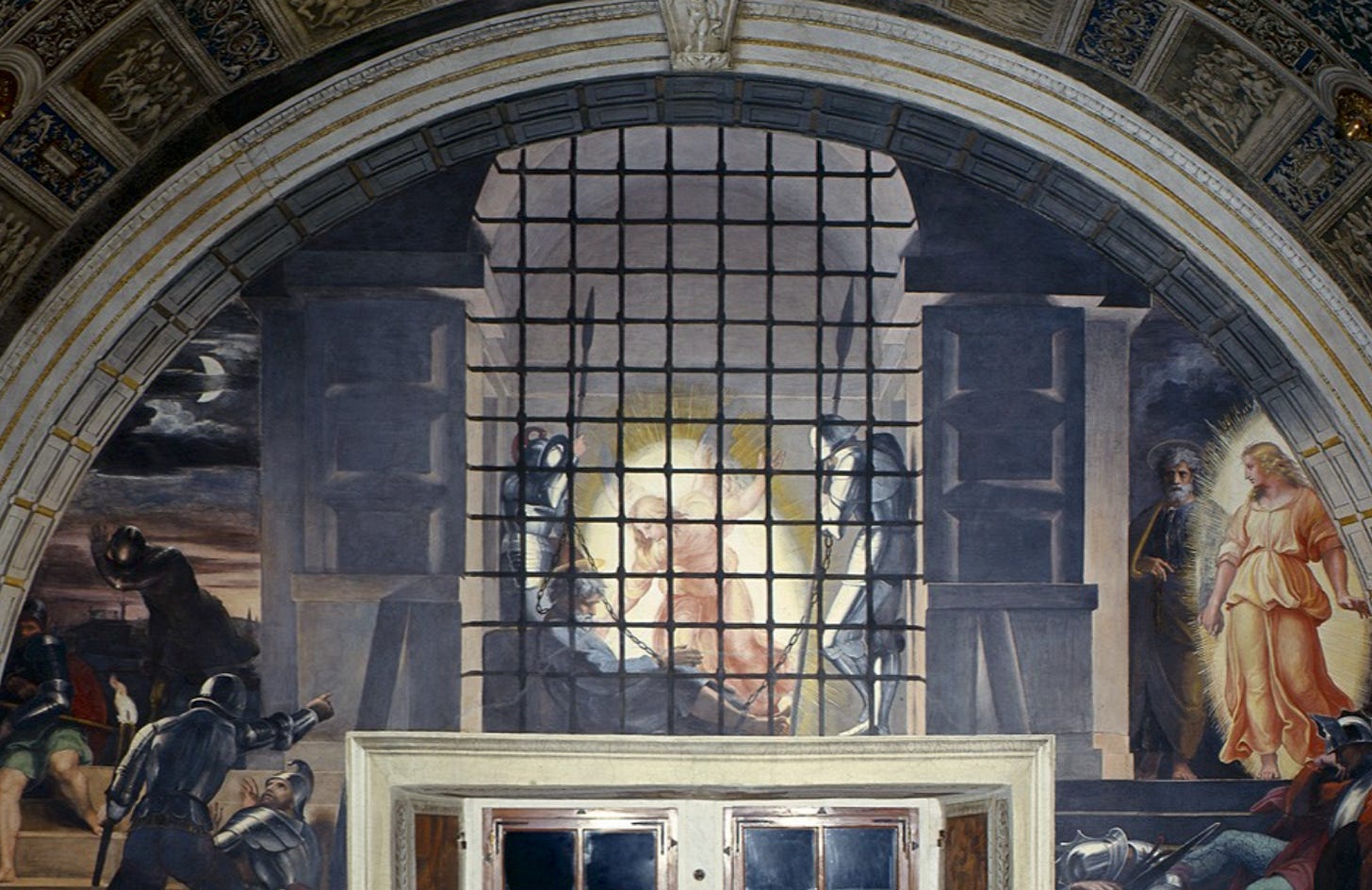This week’s Saturday Pause takes us to the Vatican in Rome.
During one of our visits, Yleem and I, like most people, wandered off to the Vatican Museums. If you know me, you know I tend to avoid crowds of any sort. That year, when we visited, it was peak summer tourist season. So even though we were on the inside, my mind was mainly focused on finding the nearest uscita or exit.
So yes, I missed a lot that year, and during other visits as well. Yet based on research we’ve done since, we’re reasonably sure we passed through all of the Raphael Rooms—though I can’t specifically recall seeing the piece featured here. But it stuck with me, somehow. And it’s one more reason we need to go back.

Crowds aside, that year was a good visit, though it was the only time we went to the Museums. Again, Jason and the crowd are like oil and vinegar. But sometimes, you’ve got to walk through the mob to find the light.
There was one image I didn’t fully absorb at the time, but wish I had: The Liberation of St. Peter (1514), painted by Raphael during the later years of his short but magnificent career. He only lived to age 37, which makes his body of work even more remarkable.
Like much of Raphael’s work, this fresco was inspired by Sacred Scripture. The story is found in the Acts of the Apostles. St. Peter, the future martyr and first Pope of the Church, had been imprisoned by Herod. Why? Herod was a politician.
The cliff-note version: Herod didn’t want trouble, and the Christians, at least in his eyes, were starting to cause it. And we have been rabble-rousing ever since! Anyhow, all of the original Twelve Apostles encountered political resistance almost everywhere they went. All but one were martyred, tortured, and unjustly imprisoned.
Raphael captures a moment from Acts 12:6–11. Peter lies chained between two Roman guards. Suddenly, a brilliant angel of the Lord appears, bathed in light. The chains fall. The guards remain asleep. Peter, probably shocked—but not entirely surprised—is led out into the night, unsure if it’s real or just a vision.
The scene plays out like a film still. What makes it so powerful is how Raphael paints light and darkness battling in silence. As someone who enjoys photography, I spend a lot of time thinking about light and how to capture it effectively. But to paint light, to control it across a massive fresco, that’s something else entirely.
Raphael uses light to draw us into mystery. It’s not just a story of escape. It’s a visual meditation on grace, mercy, and divine rescue. Some experts claim it is not political art. Or is it? It’s certainly theological. It doesn’t glorify man’s cleverness. It points to something higher. Deliverance, not escape. Light, not force. Freedom, not noise.
And maybe that’s why it’s stayed with me. This image quietly echoes moments I’ve seen or worked on, when someone is unjustly detained, sometimes forgotten, and yet, somehow, light still breaks through. The mystery of how—and why—is often beyond us. But it happens.
“The light shines in the darkness, and the darkness has not overcome it.”
— John 1:5
Read more about it at the Vatican Museum website.



